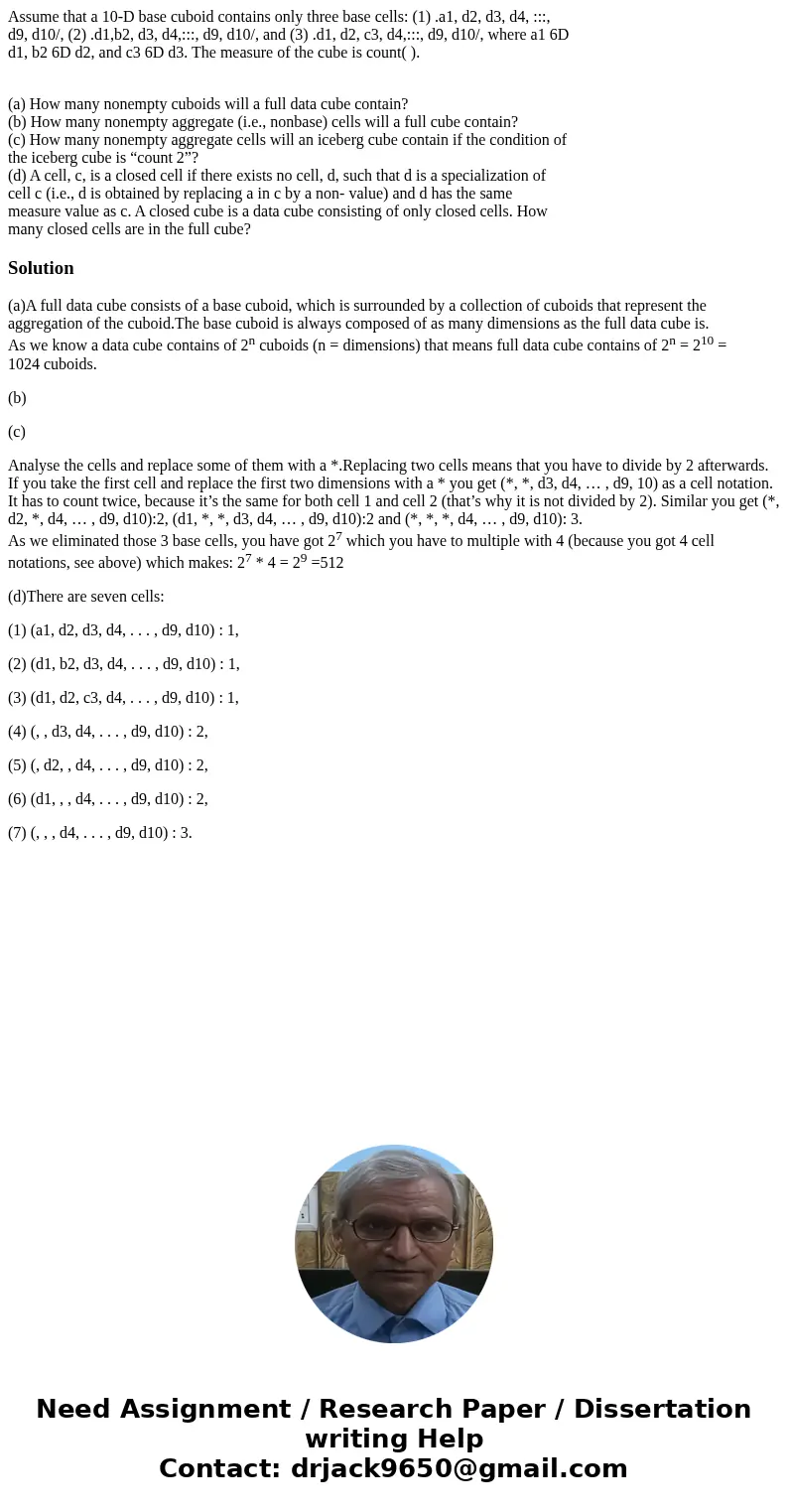Assume that a 10D base cuboid contains only three base cells
Assume that a 10-D base cuboid contains only three base cells: (1) .a1, d2, d3, d4, :::,
d9, d10/, (2) .d1,b2, d3, d4,:::, d9, d10/, and (3) .d1, d2, c3, d4,:::, d9, d10/, where a1 6D
d1, b2 6D d2, and c3 6D d3. The measure of the cube is count( ).
(a) How many nonempty cuboids will a full data cube contain?
(b) How many nonempty aggregate (i.e., nonbase) cells will a full cube contain?
(c) How many nonempty aggregate cells will an iceberg cube contain if the condition of
the iceberg cube is “count 2”?
(d) A cell, c, is a closed cell if there exists no cell, d, such that d is a specialization of
cell c (i.e., d is obtained by replacing a in c by a non- value) and d has the same
measure value as c. A closed cube is a data cube consisting of only closed cells. How
many closed cells are in the full cube?
Solution
(a)A full data cube consists of a base cuboid, which is surrounded by a collection of cuboids that represent the aggregation of the cuboid.The base cuboid is always composed of as many dimensions as the full data cube is.
As we know a data cube contains of 2n cuboids (n = dimensions) that means full data cube contains of 2n = 210 =
1024 cuboids.
(b)
(c)
Analyse the cells and replace some of them with a *.Replacing two cells means that you have to divide by 2 afterwards. If you take the first cell and replace the first two dimensions with a * you get (*, *, d3, d4, … , d9, 10) as a cell notation. It has to count twice, because it’s the same for both cell 1 and cell 2 (that’s why it is not divided by 2). Similar you get (*, d2, *, d4, … , d9, d10):2, (d1, *, *, d3, d4, … , d9, d10):2 and (*, *, *, d4, … , d9, d10): 3.
As we eliminated those 3 base cells, you have got 27 which you have to multiple with 4 (because you got 4 cell notations, see above) which makes: 27 * 4 = 29 =512
(d)There are seven cells:
(1) (a1, d2, d3, d4, . . . , d9, d10) : 1,
(2) (d1, b2, d3, d4, . . . , d9, d10) : 1,
(3) (d1, d2, c3, d4, . . . , d9, d10) : 1,
(4) (, , d3, d4, . . . , d9, d10) : 2,
(5) (, d2, , d4, . . . , d9, d10) : 2,
(6) (d1, , , d4, . . . , d9, d10) : 2,
(7) (, , , d4, . . . , d9, d10) : 3.

 Homework Sourse
Homework Sourse